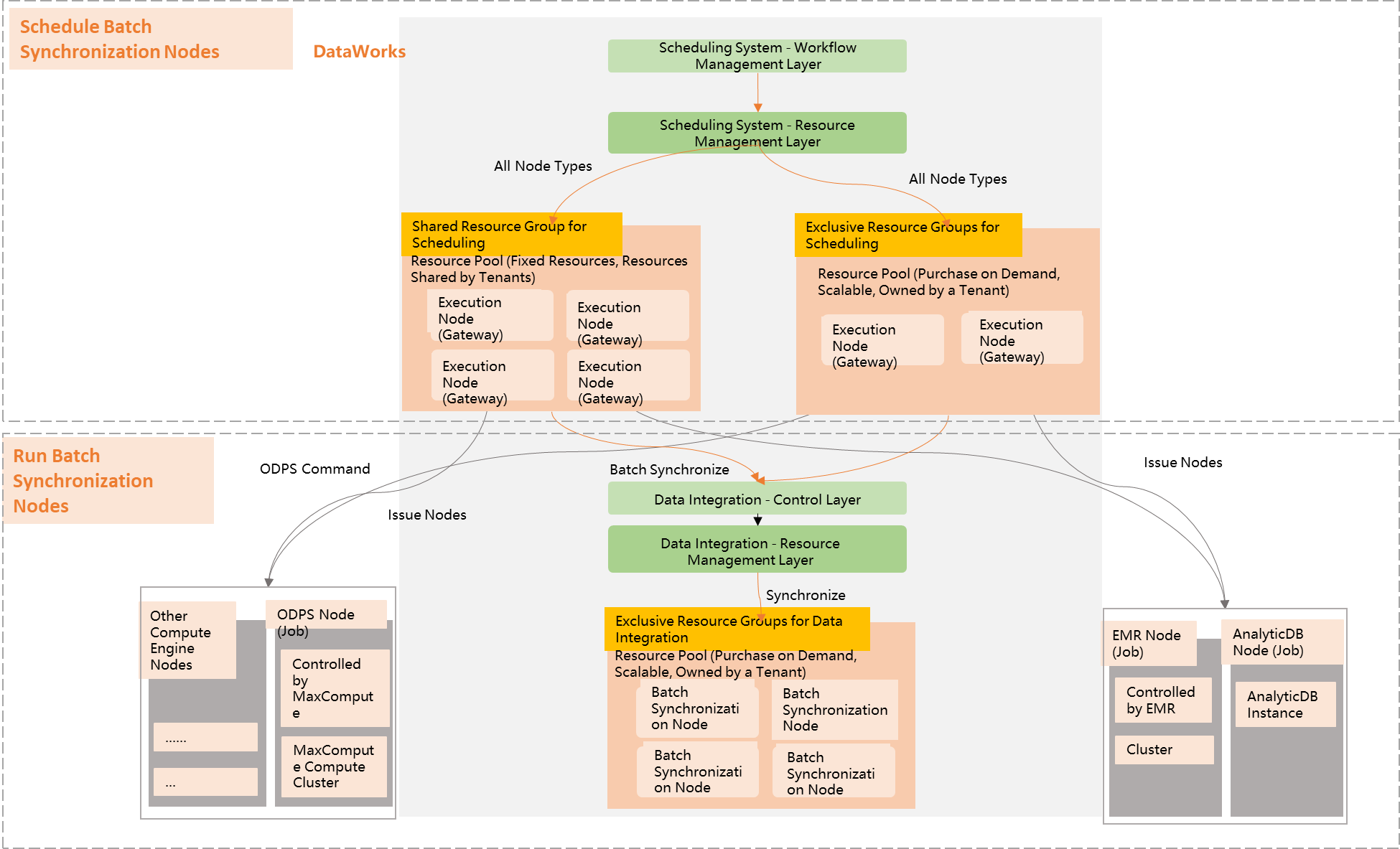Comparison item | Old-version resource group (exclusive resource groups and shared resource groups) | Serverless resource group |
Classification | Resource groups are classified into resource groups for Data Integration, resource groups for scheduling, and resource groups for DataService Studio based on their purposes. | Resource groups are used for general purposes and are not classified. |
Support for features | Some capabilities of DataWorks are not supported. | All capabilities of DataWorks are supported. |
Support for mixed use | Each type of resource group serves only one purpose. | A resource group can be used in data synchronization, scheduling, and DataService Studio at the same time. |
Sales mode | Resource groups are charged based on the specifications and the number of machines. A resource group must contain at least one machine, and the minimum specifications of a machine are 4 vCPUs and 8 GiB of memory. The minimum step size for scaling out a resource group is one machine whose specifications are 4 vCPUs and 8 GiB of memory. | Resource groups are sold by compute unit (CU). A resource group must contain at least two CUs. The minimum step size for scaling out a resource group is one CU. |
Billing method | | Both the subscription and pay-as-you-go billing methods are supported. |
Resource waste | DataWorks provides only limited types of specifications for resource groups. This causes a specific amount of resource fragments to be generated on machines of each type of specifications. As a result, resources are wasted. | You can determine the number of CUs based on your business requirements. This prevents resource waste. |
Scalability | | You can directly change the number of CUs for a resource group. |
Impact generated by scale-out or scale-in | Running tasks are affected. | Running tasks are not affected. Note Upgrading or downgrading the configuration of a serverless resource group does not affect the tasks that are running on the serverless resource group. |
Network security | DataWorks manages inbound and outbound Internet traffic for resource groups. The Internet bandwidth of resource groups is shared by multiple users. This causes resource competition. | Users use their own Internet capabilities, which makes the behavior of users controllable. |
Development trend | Old-version resource groups will be discontinued in the future. | Serverless resource groups will become the only resource groups that are supported by DataWorks. |
Support for custom images | Custom images are not supported. | Custom images are supported. If you use a serverless resource group to deploy tasks, you can create an image that contains all components required for running tasks. This helps meet more conditions for running tasks. |
 Elastic Compute Service (ECS)
Elastic Compute Service (ECS)
 Container Compute Service (ACS)
Container Compute Service (ACS)





























